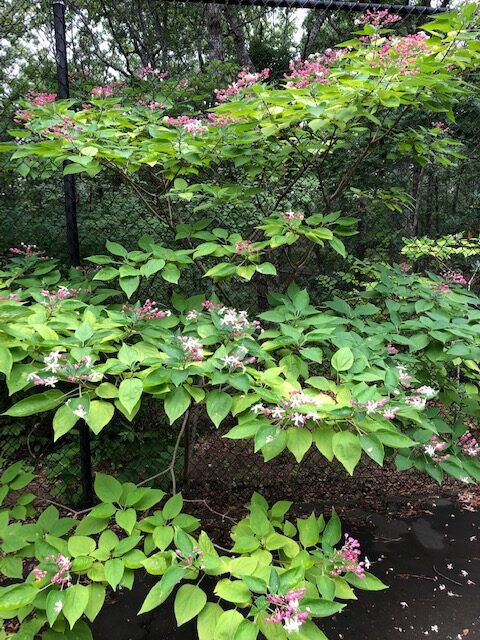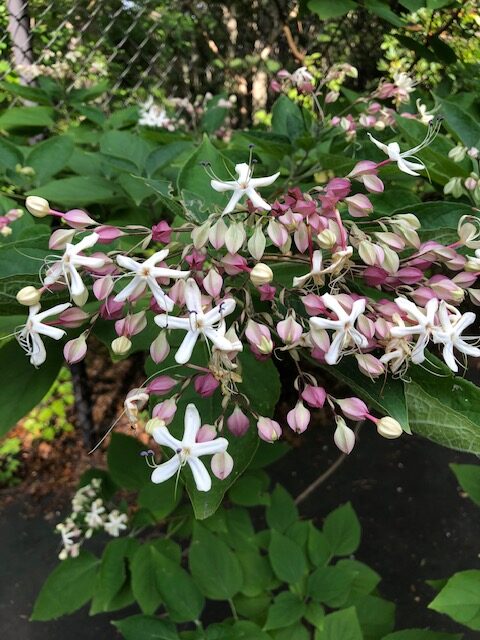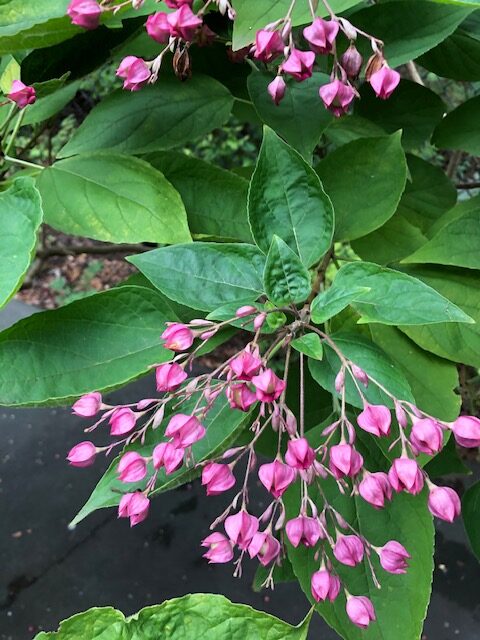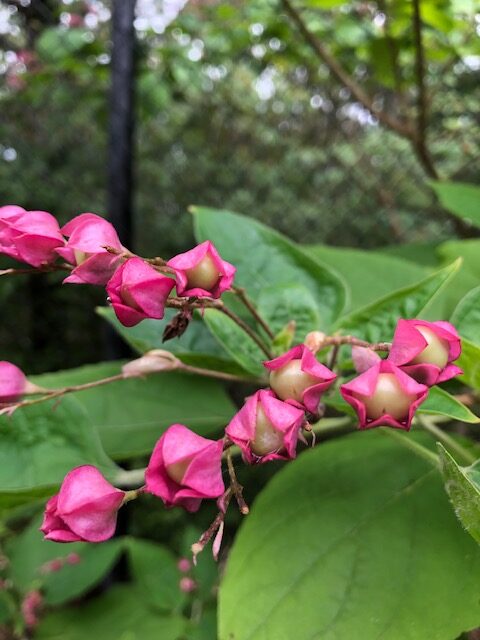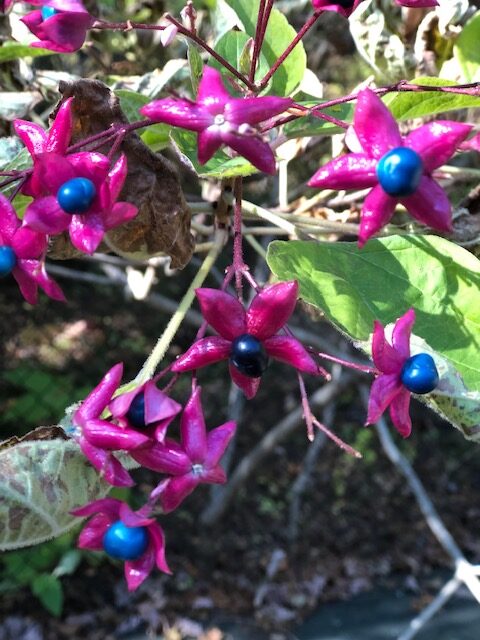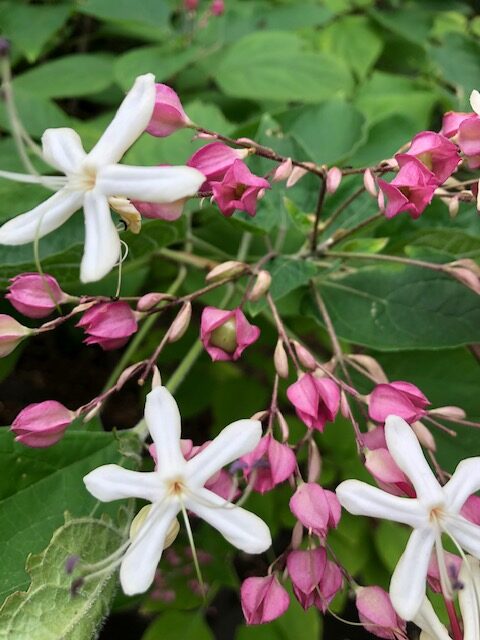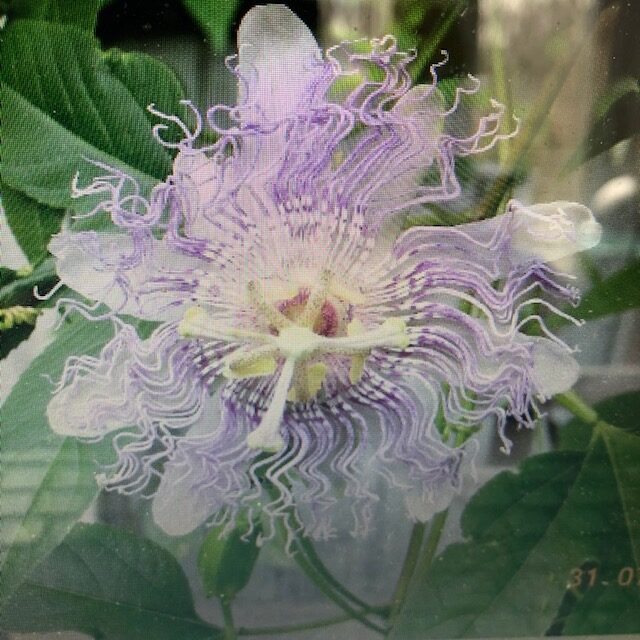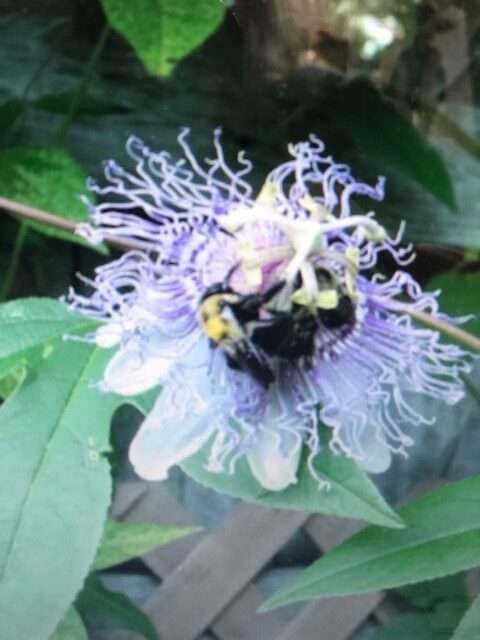“There can be no perfect flower without fragrance.” Stephane Mallarme
This post is all about fragrance. I am a card-carrying fragrant plant groupie and my garden is filled with time-tested, beautiful, sweetly-scented flowering plants. I’m rewarded daily with Aromatherapy in my own backyard!
I’ve chosen a shrub and a vine for your consideration:
Clerodendrum trichotomum (Harlequin Glory Bower Z 7-9) made the cut at the insistence of bees, butterflies, and hummingbirds. I am thrilled at the sight of the pollinator trifecta taking turns flirting with this tall showy deciduous shrub.
In late Summer, Harlequin Glory Bower produces scores of white flowers that spill intense, seductive perfume on the air. When the flowers fade and drop, their calyxes turn rosy pink. In the Fall, the calyxes’ pink sepals open and reveal, nested within, small, greenish-hued pea-shaped fruit that turns an astonishing metallic-cerulean blue. Sometimes flowers, pink calyxes, and fruit appear at the same time. Photos below.
(Be aware: When Clerodendrum is established and happy, it may thank you for your kind care with a gift of pop-up volunteers by way of its underground roots.)
Provide rich organic, well-draining, moist, acidic soil.
Passiflora x ‘Incense’ (Passion Flower Z 7-10) is an award-winning, hardy, exotic flowering vine with intoxicating fragrance. For thirty-three years it has flourished — disease-free and pest-free — in my zone 7a organic garden. The plant dies back in winter and returns in late Spring the following year, unlike the countless other Passion Flowers I have tried that died at first frost and never came back. The vine flowers on new growth.
(Be aware: P. x ‘Incense,’ like Clerodendrum, is a runner: expect volunteers to pop up from the mother plant’s underground roots.)
P. x ‘Incense’ has an interesting back-story: The plant was the result of a USDA hybridizing program aimed at developing hardy tropical fruits. One of Incense’s parents was P. incarnata, the hardy North American native vine; the other parent was the tropical South American native, P. cincinnata, a vine that produces large, luscious fruit. While Incense inherited the hardiness gene, its fruit failed to impress. Yet, to my mind, the project was a huge success: P. x ‘Incense’ has showy, unique, fragrant flowers beloved by bees, butterflies, and this grateful gardener. Photos below.
Provide moist, well-drained soil, in sun or part shade.
Spring is just a shiver away!
